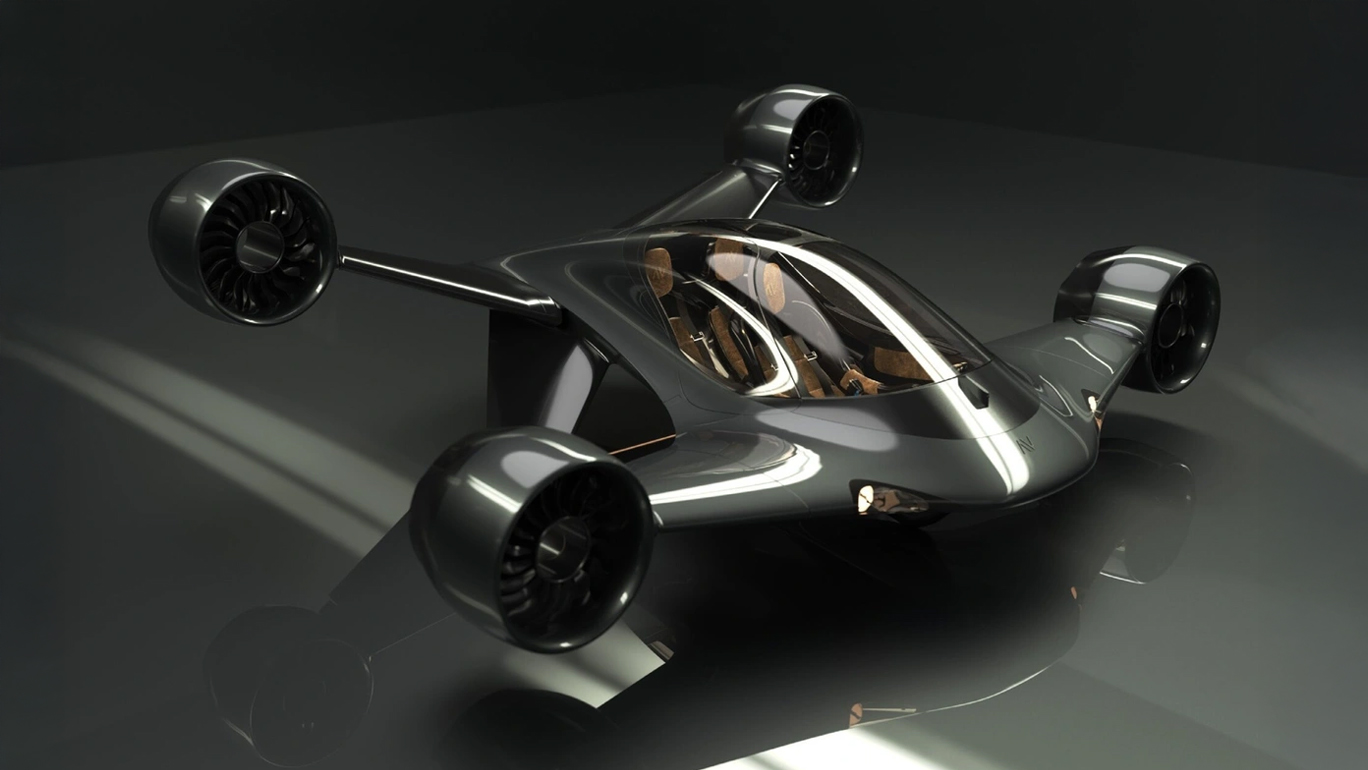In a major leap toward the future of private transportation, London-based startup AltoVolo has unveiled its first personal flying vehicle, the Sigma. With a promised flight range of 500 miles and a cruising speed of 220 mph, this hybrid-electric aircraft is engineered to redefine how people move over regional distances.
The three-seater Sigma is designed as a vertical takeoff and landing (VTOL) aircraft that uses electric batteries for liftoff and landing while relying on liquid fuel for longer-distance flight. AltoVolo claims the Sigma will offer the fastest point-to-point personal transportation solution currently in development.
The announcement was made by AltoVolo’s founder and CEO Will Wood, who stated that the company has made significant technical progress and is preparing for a full-scale prototype after completing successful testing of a smaller version. Wood emphasized that the Sigma represents a tangible step forward in the evolution of flight — not just for commercial or emergency uses, but for everyday personal travel.
A New Category of Personal Air Travel
Unlike many VTOL or electric aircraft concepts which are aimed at air taxi networks or cargo logistics, the Sigma is built with individual ownership in mind. Its footprint is small enough for residential takeoff and landing, including rooftops, private driveways, and yachts.
At the heart of the Sigma is a tilting jet propulsion system. The vehicle takes off vertically using electric rotors and transitions mid-air into fixed-wing flight mode powered by its hybrid engine. This approach delivers both quiet urban operation and the extended flight capability required for intercity travel.
With the Sigma, AltoVolo is entering a growing yet crowded field of aerial mobility startups, most of which are still years away from market entry. However, with a completed scale prototype and industry backing, the company believes it has a first-mover advantage in a niche segment: private personal flying vehicles.
Specifications and Technical Highlights
-
Range: 500 miles (805 kilometers)
-
Cruising Speed: 220 mph (354 km/h)
-
Takeoff/Landing: Electric-powered VTOL
-
Occupancy: 1 pilot, 2 passengers
-
Noise Level: 80% quieter than conventional helicopters
-
Power Source: Battery-electric VTOL, hybrid for cruise
-
Landing Space Required: Approximately 25 square feet
-
Fuel Type: Sustainable aviation fuel-compatible liquid system
The Sigma also integrates advanced avionics developed in collaboration with UAV system supplier Embention and flight simulation support from Ansys, which is known for its work with Formula 1 racing teams. These partnerships have been critical to ensuring real-world readiness and simulation-validated safety parameters.
A Sustainable Approach to Personal Aviation
Sustainability is central to the Sigma’s design and engineering. By using electric power for vertical takeoff and transitioning to fuel-efficient cruise flight, the vehicle minimizes energy waste while extending range. Compared to short-range battery-only eVTOLs, which are limited to 60–150 miles, the Sigma’s hybrid solution supports longer, more practical use cases.
AltoVolo also aims to reduce overall lifecycle emissions. The vehicle is built using lightweight composite materials to reduce fuel consumption. Its compact design limits the need for dedicated infrastructure, further lowering environmental impact. The aircraft will be compatible with sustainable aviation fuel blends, reducing the carbon footprint per mile traveled.
CEO Will Wood commented, “The Sigma is a statement of intent — reimagining how we move across the world with sustainability and performance as equal priorities. We’re not building a gadget; we’re building the future of human transport.”
Market Position and FAA Certification Path
The Sigma is expected to enter the U.S. market through the traditional aircraft certification process with the Federal Aviation Administration (FAA). Unlike drone-style eVTOLs designed for autopilot functions, the Sigma will require a licensed pilot for operation. AltoVolo is working with aviation authorities in both the U.S. and the EU to streamline the aircraft’s path to approval.
Pre-orders are scheduled to begin in July 2025, with a public unveiling of the full-scale demonstrator anticipated in late 2025 or early 2026. The company plans to deliver the first units to a limited group of early adopters in 2027, pending certification.
The aircraft will target high-net-worth individuals, aviation hobbyists, and early adopters in markets such as North America, Europe, and the Gulf region. However, AltoVolo has stated its long-term mission is to democratize flight by reducing costs through mass production and economies of scale.
Comparing the Sigma to Other Air Mobility Projects
Many companies are racing to build the future of flight, but few focus on individual ownership. Unlike Joby Aviation, which is developing an air taxi network, or Samson Sky, whose Switchblade aims to be road-legal, the Sigma is purely a personal-use aircraft designed for real-world application.
| Aircraft | Type | Range | Cruise Speed | Ownership Model | Status |
|---|---|---|---|---|---|
| Sigma (AltoVolo) | Hybrid eVTOL | 500 mi | 220 mph | Personal | Prototype tested |
| Joby S4 | All-electric VTOL | 150 mi | 200 mph | Ride-sharing | Pre-certification |
| Doroni H1 | Electric VTOL | 60 mi | 100 mph | Personal | In test phase |
| Switchblade | Flying car | 450 mi | 190 mph | Personal | In testing |
The Sigma offers the longest range in the hybrid or electric VTOL space, and its hybrid propulsion system may help it bypass the infrastructure constraints plaguing battery-only designs.
Looking Ahead
The road to certifying and manufacturing personal flying vehicles is still full of regulatory and engineering hurdles, but AltoVolo’s Sigma is one of the few projects to blend advanced flight performance, safety, and market realism. With successful prototype testing and a roadmap toward full-scale production, the Sigma may become the first personal flying vehicle to reach customers at scale.
As global interest in urban air mobility continues to grow, the Sigma is poised to stand out by offering what many concepts have not — a feasible, functional flying vehicle for everyday owners. With its blend of range, sustainability, and speed, it could signal the dawn of a new era in personal aviation.
YAllA TV – www.yallatv.ae





